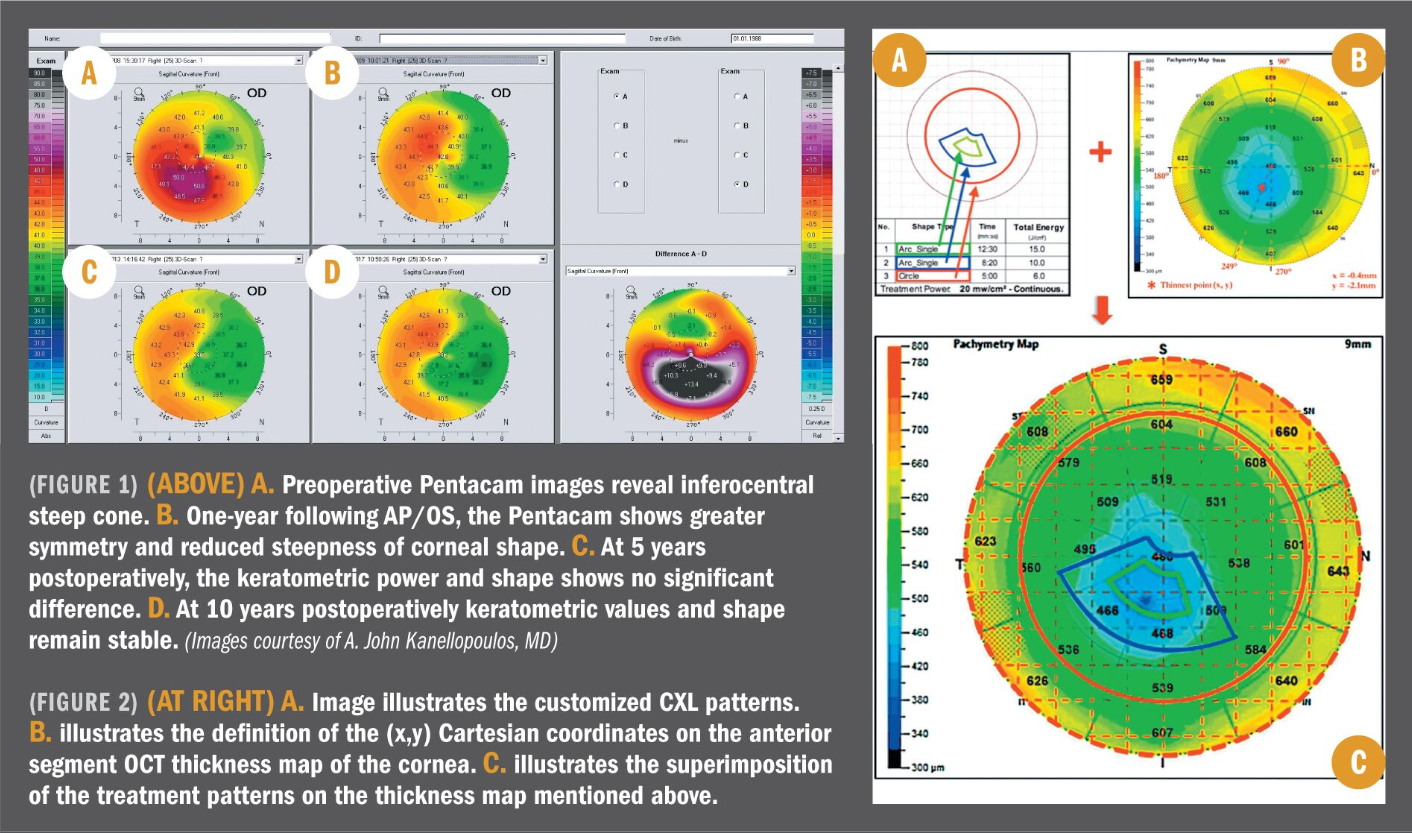Article
CXL combination therapies may encompass variety of surgical goals
Author(s):
Adding procedure can improve visual function, offer patients normal lifestyle

Reviewed by A. John Kanellopoulos, MD
Surgeons who may perform a variety of cataract-refractive procedures may recognize corneal crosslinking (CXL) as the gold standard for halting progression in eyes with keratoconus or post-LASIK ectasia, but there are multiple indications for using CXL in a combination regimen, according to A. John Kanellopoulos, MD.
“Looking beyond ectasia stabilization to visual rehabilitation, adding a procedure to CXL can improve visual function to offer patients a normal lifestyle,” said Dr. Kanellopoulos, clinical professor of ophthalmology, NYU Langone Medical Center, New York, and Medical Director, Laservision.gr Institute, Athens, Greece.
“In addition, CXL can be added to LASIK as a biomechanical modulator and used with antibiotics to treat infectious keratitis.”
The Athens Protocol
The Athens Protocol-involving same-day, sequential CXL and topographyguided partial PRK-was developed by Dr. Kanellopoulos and is his preferred combination approach for addressing visual rehabilitation needs in patients being treated with CXL for corneal ectasia.
“CXL can also be combined with intrastromal corneal ring segments, but I abandoned that approach because of variable refractive results and long-term problems with corneal melting and ring extrusion,” he said. “Implanting a phakic IOL after CXL appears to be a safe and effective approach to address high residual myopia and/or anisometropia after stabilization with CXL alone or the Athens Protocol.”
Not all patients are candidates for the Athens Protocol. First, confirm that the patient has progressive keratoconus and not just an epithelial anomaly or worsening corneal edema. In addition, patients whose disease treatment must have failed other options for facilitating visual function, have sufficient residual stroma to allow safe ablation, and understand that unlike with PRK in a conventional refractive surgery patient, the goals of the procedure are not to achieve emmetropia and provide 20/15 or 20/20 uncorrected vision.
The Athens Protocol involves four steps. Partial topography-guided PRK is performed first followed by phototherapeutic keratectomy. Next, mitomycin-C 0.02% is applied for 30 seconds, and last CXL is performed with a UVA light dose of 6 mW/cm2 for 15 minutes. PTK cannot be done with the available equipment in the United States.
As a workaround, 2.5 D of myopia correction is added into the topography-guided PRK and then a +2.5 D treatment is done with a separate card to account for epithelial removal, he said.
“We believe in doing same-day surgery because we have found that approach has a synergistic effect,” Dr. Kanellopoulos said.
CXL may be used in combination with LASIK as a prophylactic modality to stabilize the cornea when treating higher levels of myopia or in younger patients (age < 30 years) who are potentially at risk for ectasia, but for whom LASIK is not absolutely contraindicated.
In addition, CXL has been combined with hyperopic LASIK for the purpose of achieving an added refractive effect and stabilizing the refractive effect long term.
CXL performed using higher fluence and energy levels (60 seconds; 30mW/cm2) is also being used together with antibiotics to treat corneal infections with good results. In this approach, CXL is believed to provide benefits both because of a direct bactericidal effect and for reducing the risk of corneal melt.
Disclosures:
A. John Kanellopoulos, MD
E: a.kanellopoulous@nyulangone.org
This article was adapted from Dr. Kanellopoulos’ presentation at the 2018 meeting of the American Academy of Ophthalmology. Dr. Kanellopoulos is a consultant for AJKMD Events, Alcon Laboratories, Allergan, ARC Laser, Avedro, Carl Zeiss Meditec, i-Optics, IPS Surgical, Keramed, Optovue, and Orca.
Newsletter
Don’t miss out—get Ophthalmology Times updates on the latest clinical advancements and expert interviews, straight to your inbox.





